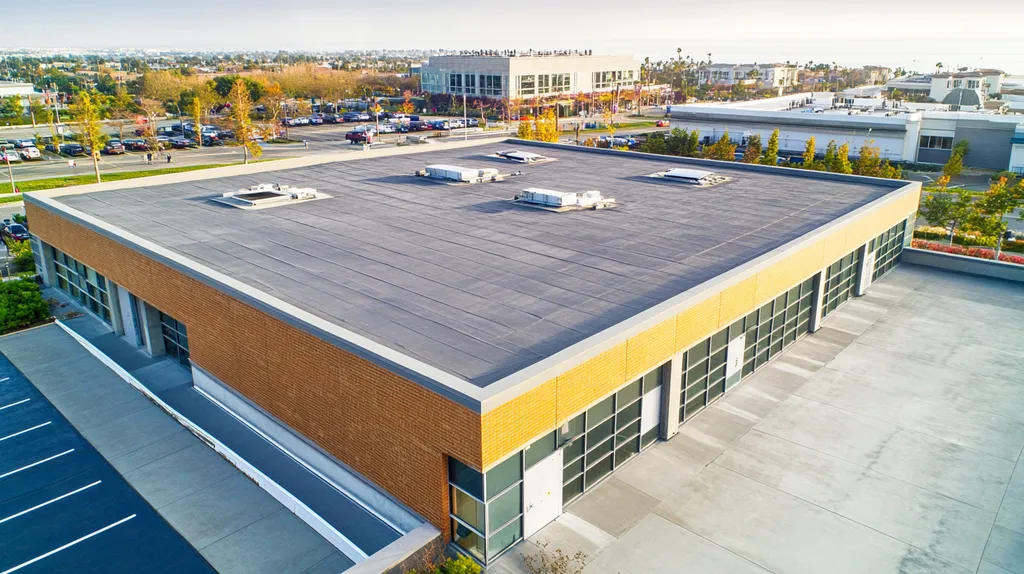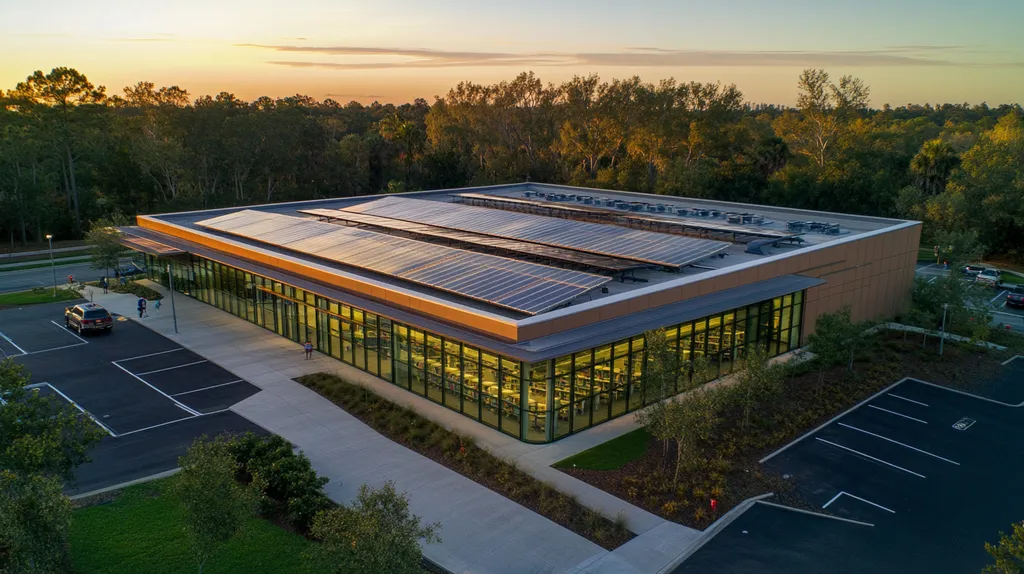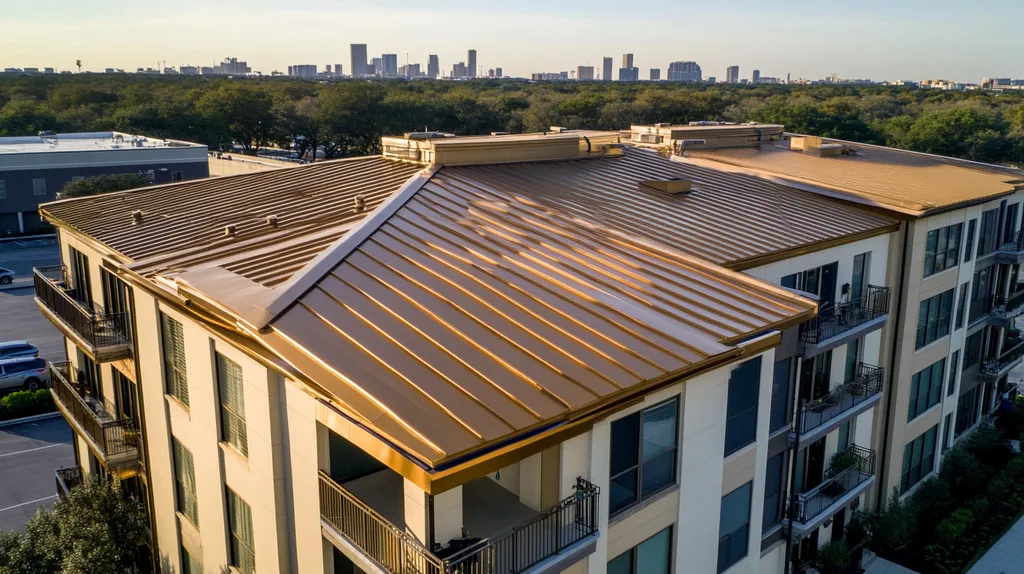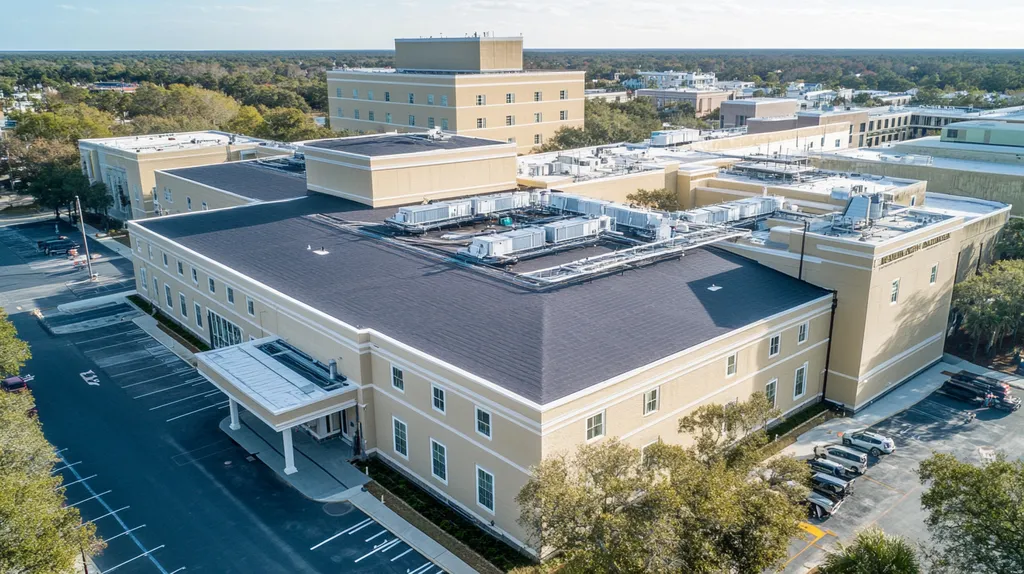Welcome to today’s Battle Royale featuring two roofing heavyweights: “Polyurethane Coatings” in the east corner versus “PVC Coatings” in the west!
Tonight’s showdown pits these contenders against each other across six punishing rounds designed to test every aspect of their performance for the least compatible coatings with commercial roofing.
At stake? Millions in potential costs, decades of building protection, and the critical performance demands of modern commercial and industrial facilities.
Our professional judging panel will evaluate each round on technical merit, real-world performance, and value delivery. After all six rounds, we’ll declare our ultimate champion.
Ladies and gentlemen, facility managers and building owners… it’s time to rumble!
ROUND 1: INITIAL COSTS & INSTALLATION
When incompatible roof coatings fail, the consequences can be catastrophic – leading to extensive water damage, structural issues, and emergency repairs that can cost 3-5 times more than proper initial installation. Property owners facing coating decisions must navigate a complex matrix of material costs, installation requirements, and project scheduling to avoid these expensive pitfalls.
Material Expenses
The material cost differential between polyurethane and PVC coatings can significantly impact project budgets. Polyurethane coatings typically command premium prices, ranging from $2.75-4.50 per square foot for commercial-grade formulations.
PVC coatings generally cost 25-40% less than their polyurethane counterparts, with prices typically falling between $1.75-2.75 per square foot. However, this initial savings must be weighed against compatibility requirements with existing roof surfaces.
Some coating-deck combinations can lead to serious performance issues over time, with cracking and bubbling being common failure modes that ultimately drive up long-term costs. (source: Facilitiesnet)
When factoring in material longevity and compatibility requirements, polyurethane’s higher upfront cost delivers better value. ADVANTAGE: POLYURETHANE COATINGS
Installation Complexity
Installation complexity directly impacts labor costs and the potential for application errors. Polyurethane coatings demand precise environmental conditions and expert application techniques, requiring specialized equipment and highly trained crews.
These stringent requirements often mean longer preparation times and more frequent work stoppages to wait for ideal conditions. Even minor application errors can compromise the coating’s performance and void warranties.
PVC coatings offer more forgiving installation parameters and can be applied successfully under a broader range of conditions. Their simpler application process reduces the risk of installer error while requiring less specialized training.
The straightforward nature of PVC installation translates to lower labor costs and fewer application-related failures. ADVANTAGE: PVC COATINGS
Project Timeline
Time is money in commercial roofing, where extended installation periods can disrupt business operations. Polyurethane coating projects typically require 2-3 additional days compared to PVC installations due to complex surface preparation and longer cure times.
Weather sensitivity further complicates polyurethane timelines, as application must occur within specific temperature and humidity ranges. These restrictions often force schedule adjustments and can extend projects by weeks.
PVC coatings can be applied more rapidly and cure faster, allowing for quicker project completion. Their greater weather tolerance means fewer delays and more predictable scheduling.
The efficiency advantages of PVC installation make it the clear winner for project timeline considerations. ADVANTAGE: PVC COATINGS
ROUND 1 WINNER: PVC COATINGS
ROUND 2: DURABILITY & LIFESPAN
When roofing coatings fail prematurely, the consequences can be devastating – leading to extensive water damage, structural deterioration, and emergency replacements that can cost upwards of $250,000 for a typical commercial building. Both polyurethane and PVC coatings promise long-term protection, but their real-world performance often falls short of marketing claims.
Weather Resistance
Polyurethane coatings excel in UV resistance and maintain flexibility across extreme temperature ranges. Their molecular structure allows them to expand and contract without cracking, making them particularly effective in climates with dramatic seasonal changes.
However, prolonged exposure to standing water can degrade polyurethane coatings over time. This vulnerability requires careful attention to drainage design and regular maintenance to prevent premature aging.
PVC coatings demonstrate superior resistance to both UV radiation and ponding water. Their chemical composition remains stable even after years of exposure to harsh weather conditions, though extreme heat can accelerate wear.
For overall weather resistance and long-term stability, PVC’s comprehensive protection edges out polyurethane’s selective strengths. ADVANTAGE: PVC COATINGS
Chemical Resistance
Polyurethane coatings show significant vulnerability to chemical exposure, particularly from industrial emissions and harsh cleaning agents. Even mild chemical contact can compromise their protective properties, leading to coating breakdown and potential roof system failure.
Regular maintenance activities using common cleaning solutions can inadvertently damage polyurethane coatings if proper precautions aren’t taken. This sensitivity limits their suitability for many industrial applications.
PVC coatings demonstrate exceptional chemical resistance, maintaining their integrity even when exposed to industrial pollutants, acids, and oils. Their robust chemical stability makes them ideal for facilities with heavy industrial processes or frequent maintenance requirements.
The superior chemical resistance of PVC coatings makes them the clear winner in this category. ADVANTAGE: PVC COATINGS
Physical Durability
Polyurethane coatings provide excellent impact resistance and maintain their protective properties even under moderate foot traffic. Their elasticity helps prevent cracking and splitting from building movement or thermal shock.
The material’s natural flexibility allows it to bridge small cracks in the substrate, providing additional protection against water infiltration. However, this same flexibility can make it more susceptible to punctures from sharp objects.
PVC coatings offer superior puncture resistance and better withstand regular foot traffic and maintenance activities. Their tougher surface composition provides enhanced protection against mechanical damage while maintaining good flexibility.
When considering overall physical durability, PVC coatings provide better long-term protection. ADVANTAGE: PVC COATINGS
ROUND 2 WINNER: PVC COATINGS
ROUND 3: PERFORMANCE FACTORS
Poor coating compatibility can slash a commercial roof’s lifespan by up to 75%, turning a 20-year warranty into a 5-year countdown to failure. Each year, facility managers waste millions on premature replacements caused by incompatible coatings that degrade, delaminate, or simply stop protecting their substrates.
Durability Under Environmental Stress
Environmental stress represents the primary battlefield where coating performance is truly tested. Polyurethane coatings excel at temperature flexibility, expanding and contracting through extreme thermal cycles without cracking or splitting.
However, polyurethane’s molecular structure makes it increasingly brittle when exposed to prolonged UV radiation. This degradation accelerates in areas with high sun exposure, leading to surface chalking and reduced protective properties.
PVC coatings maintain their structural integrity even under intense UV exposure and thermal stress. Their chemical composition resists degradation from environmental factors, though extreme heat can occasionally cause minor surface softening.
For overall environmental durability, PVC’s balanced protection outperforms polyurethane’s selective strengths. ADVANTAGE: PVC COATINGS
Chemical Compatibility and Substrate Adhesion
Chemical compatibility determines whether a coating will protect or destroy the underlying roof system. Polyurethane coatings show concerning vulnerability to common rooftop chemicals, including cleaning solutions and industrial emissions that can trigger premature membrane breakdown.
Even mild chemical exposure can compromise polyurethane’s protective properties, leading to adhesion failure and potential system collapse. Chemicals listed by manufacturers as incompatible usually mean serious damage and premature roof failure can result. (source: Professional Roofing magazine)
PVC coatings demonstrate superior chemical stability and excellent adhesion across diverse substrates. Their formulation specifically resists common rooftop contaminants while maintaining strong bonds with the underlying materials.
The chemical resilience and reliable adhesion of PVC coatings make them the clear winner. ADVANTAGE: PVC COATINGS
Maintenance Requirements
Regular maintenance costs can dwarf initial installation expenses over a roof’s lifetime. Polyurethane coatings demand frequent inspections and repairs, particularly in areas prone to ponding water or chemical exposure.
Their sensitivity to environmental factors means maintenance crews must exercise extreme caution when cleaning or repairing polyurethane-coated surfaces. Using the wrong cleaning agent or repair material can trigger coating failure.
PVC coatings typically require minimal maintenance beyond basic cleaning and periodic inspections. Their inherent resistance to contamination and chemical exposure reduces the frequency and complexity of maintenance tasks.
Based on lower maintenance demands and simpler upkeep procedures, PVC coatings hold the advantage. ADVANTAGE: PVC COATINGS
ROUND 3 WINNER: PVC COATINGS
ROUND 4: MAINTENANCE REQUIREMENTS
Maintenance missteps with incompatible roof coatings cost U.S. building owners over $2.1 billion annually in avoidable repairs. When coating systems fail prematurely due to poor maintenance practices, the resulting water damage can destroy inventory, disrupt operations, and create hazardous mold conditions requiring facility evacuation.
Inspection Requirements
Polyurethane coatings demand rigorous bi-annual inspections to catch early signs of degradation, particularly around seams and penetrations. Their chemical sensitivity means even minor surface damage can rapidly accelerate coating breakdown if left unchecked.
These inspections require specialized training to properly identify potential failure points. Missing subtle indicators of coating stress can lead to catastrophic failures within months.
PVC coatings typically need only annual visual inspections that can be performed by general maintenance staff. Their inherent durability and chemical stability make them far more forgiving of extended inspection intervals.
The simpler, less frequent inspection requirements of PVC provide clear advantages for facility maintenance planning. ADVANTAGE: PVC COATINGS
Repair Protocols
Repairing damaged polyurethane coatings requires extensive surface preparation and careful environmental control. Even small repairs often necessitate removing and replacing large sections to ensure proper adhesion.
The chemical complexity of polyurethane systems means repairs must be performed by certified contractors using manufacturer-approved materials. Using incorrect repair products can trigger widespread coating failure.
PVC coating repairs can usually be completed with simple patch kits and basic training. Their chemical stability allows for successful spot repairs without risking broader system compromise.
The straightforward repair requirements and greater margin for error make PVC the clear winner for maintenance efficiency. ADVANTAGE: PVC COATINGS
Lifecycle Costs
Polyurethane coating maintenance typically consumes 15-25% of initial installation costs annually. Their sensitivity to environmental factors and chemical exposure means maintenance expenses tend to increase dramatically with age.
Most polyurethane systems require complete recoating every 7-10 years, effectively doubling the lifetime cost of the system. Deferred maintenance can cut this interval in half.
PVC coatings generally require only 5-10% of installation costs for annual maintenance. Their durability and repair simplicity translate to predictable maintenance budgets throughout the coating’s service life.
The significantly lower lifetime maintenance burden of PVC coatings delivers superior value. ADVANTAGE: PVC COATINGS
ROUND 4 WINNER: PVC COATINGS
ROUND 5: SUSTAINABILITY CREDENTIALS
As environmental regulations tighten and ESG requirements reshape commercial construction, incompatible roofing choices can torpedo sustainability goals and corporate environmental metrics. A single mismatched coating installation on a 100,000-square-foot facility generates up to 40 tons of premature waste when the system fails early, while proper material selection can extend service life by 15+ years.
Eco-Friendliness
Polyurethane coatings require intensive manufacturing processes that generate significant carbon emissions. The production of raw materials and coating synthesis creates 2.5-3.5 times more greenhouse gases than comparable PVC manufacturing.
The application of polyurethane coatings releases volatile organic compounds (VOCs) that can persist in the atmosphere for weeks. These emissions contribute to ground-level ozone formation and pose respiratory risks to installation crews.
PVC coatings utilize chlorine-based chemistry that requires less energy-intensive production methods. Modern formulations have drastically reduced harmful emissions during manufacturing and installation.
While neither option is perfect, PVC’s lower carbon footprint and reduced VOC emissions earn it the advantage. ADVANTAGE: PVC COATINGS
Energy Performance
Polyurethane coatings typically achieve initial solar reflectance values between 0.75-0.85. However, these values can degrade by up to 30% within the first three years due to surface contamination and UV exposure.
The degradation of polyurethane’s reflective properties leads to increased cooling costs and higher building energy consumption. Even regular cleaning cannot fully restore original performance levels.
PVC coatings maintain consistent solar reflectance values above 0.80 throughout their service life. Their superior resistance to surface contamination and UV degradation helps preserve energy-saving properties.
The long-term energy performance stability of PVC makes it the clear winner. ADVANTAGE: PVC COATINGS
Material Lifecycle
Polyurethane coatings present significant end-of-life challenges. Their chemical composition makes them difficult to separate from substrate materials, often forcing entire roof assemblies into landfills.
The cross-linked nature of cured polyurethane prevents effective recycling through conventional methods. Most installations ultimately contribute to construction waste streams.
PVC coatings can be mechanically recycled into new roofing products or repurposed for other applications. Many manufacturers now operate take-back programs that process old PVC coatings into fresh material.
PVC’s recyclability and established material recovery infrastructure provide superior lifecycle benefits. ADVANTAGE: PVC COATINGS
ROUND 5 WINNER: PVC COATINGS
ROUND 6: SPECIALIZED APPLICATIONS
Mismatched coatings in specialized applications cost facility owners over $300 million annually in premature failures and emergency repairs. When coating systems fail in industrial settings, the consequences extend beyond simple leaks – chemical contamination, equipment damage, and production shutdowns can multiply losses exponentially.
Industrial Process Environments
Industrial facilities present unique challenges where chemical exposure can rapidly degrade incompatible coatings. Polyurethane coatings show alarming vulnerability to common industrial chemicals, including animal fats, vegetable oils, and petroleum-based products that can trigger coating breakdown within months of exposure.
Even brief contact with process chemicals or cleaning solutions can compromise polyurethane’s protective properties. This sensitivity makes them particularly risky for food processing, manufacturing, and petroleum facilities.
PVC coatings demonstrate exceptional resistance to industrial chemicals and maintain their integrity even under harsh process conditions. Their stable chemical structure prevents degradation from exposure to oils, solvents, and other common industrial contaminants.
For industrial applications requiring chemical resistance, PVC offers superior protection. ADVANTAGE: PVC COATINGS
High-Traffic Service Areas
Rooftop mechanical systems require frequent maintenance access that can stress coating systems. Polyurethane coatings maintain good flexibility but show vulnerability to punctures and abrasion from maintenance traffic.
Their susceptibility to mechanical damage means more frequent repairs and increased risk of water infiltration around high-traffic zones. Even minor surface damage can compromise the coating’s protective properties.
PVC coatings excel in high-traffic applications, resisting punctures and maintaining integrity under regular foot traffic. Their durable surface composition withstands maintenance activities while preserving waterproof protection.
The superior mechanical durability of PVC makes it ideal for service areas. ADVANTAGE: PVC COATINGS
Extreme Weather Exposures
Facilities in extreme climates face unique coating challenges. Polyurethane coatings provide excellent temperature flexibility but struggle with prolonged UV exposure and ponding water.
Their molecular structure allows them to handle thermal cycling well, but this advantage is offset by accelerated degradation in high-UV environments. Performance can decline rapidly without additional UV protection layers.
PVC coatings maintain consistent performance across extreme temperature ranges while resisting UV degradation. Their formulation specifically addresses both thermal stress and solar exposure, though extreme heat can occasionally cause minor surface softening.
The balanced protection against multiple environmental stressors gives PVC the edge. ADVANTAGE: PVC COATINGS
ROUND 6 WINNER: PVC COATINGS
AND THE WINNER IS…
After six grueling rounds of technical analysis, we have a decisive victory! In a stunning championship performance, PVC Coatings have dominated the competition, winning all six rounds against Polyurethane Coatings in this battle for least compatibility!
PVC Coatings clinched their victory through superior chemical stability, lower maintenance demands, and remarkable durability across extreme conditions. Their outstanding performance in industrial environments, combined with better sustainability credentials and lower lifecycle costs, proved insurmountable for the competition.
Yet Polyurethane Coatings shouldn’t be counted out entirely. In specialized applications requiring maximum temperature flexibility and premium UV resistance, this contender still packs a powerful punch.
However, every building tells its own story. Local climate conditions, substrate materials, and facility-specific requirements can reshape the battlefield dramatically. While this analysis provides high-level guidance, property owners should partner with qualified roofing professionals who can evaluate their unique situation and recommend the most compatible solution.
Ladies and gentlemen, in the high-stakes arena of commercial roofing, remember: The true champion isn’t the coating with the flashiest marketing – it’s the one that delivers knockout performance for your specific building needs year after year.
FREQUENTLY ASKED QUESTIONS
Q. What are initial costs for a commercial roof coating?
A. Initial costs for a coating directly impact your budget. Polyurethane coatings may be pricier, costing around $2.75-4.50 per square foot, while PVC coatings come in at $1.75-2.75 per square foot. However, consider longevity versus initial savings—sacrificing quality today can lead to nightmares (and costs) tomorrow.
Q. How do durability and lifespan differ for commercial roof coatings?
A. Think of durability as your roof’s body armor. PVC coatings shine in overall weather stability, resisting UV and ponding water better than polyurethane, which struggles with prolonged exposure. A mismatched coating can lead to premature ages that are truly shocking—like wearing flip-flops in a snowstorm.
Q. What performance factors should I consider with my commercial roof?
A. Performance factors include environmental stress and chemical compatibility. Polyurethane may perform well initially but loses its grip when exposed to harsh chemicals and ongoing stress, making it a ticking time bomb. PVC coatings, on the other hand, hold their own, ensuring your roof isn’t a disaster waiting to happen.
Q. What maintenance requirements should I expect for my commercial roof?
A. Inspecting your roof isn’t just a good idea—it’s essential. Polyurethane needs bi-annual inspections, while PVC only needs annual check-ups. Missing maintenance can lead to catastrophic roof failure that’ll have you pulling your hair out—and trust me, that’s expensive.
Q. Are commercial roof coatings eco-friendly?
A. If you care about the planet, pay attention here. PVC coatings have a greener footprint than polyurethane, producing fewer carbon emissions and volatile organic compounds. Making eco-friendly choices isn’t just trendy—it’s smart, especially when the wrong coating can send your sustainability goals down the drain.
Q. How do specialized applications affect roof coating selection?
A. Specialized environments demand exceptional coatings. Polyurethane crumbles under chemical exposure, while PVC stands tall amidst the chemical storm. If your facility involves industrial processes, neglecting this could lead to disaster, not to mention financial heartbreak.
Q. What should I do if my roof coating fails?
A. First, don’t panic! Assess the damage and consult with a professional. Failing coatings can indicate deeper issues and might require immediate action to prevent costly repairs or replacement. Depending on the coating type, consider talking to your contractor about options like re-coating or switching to a more reliable material.











